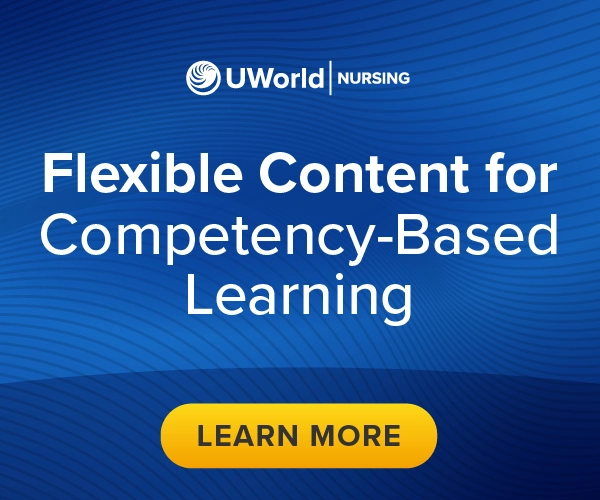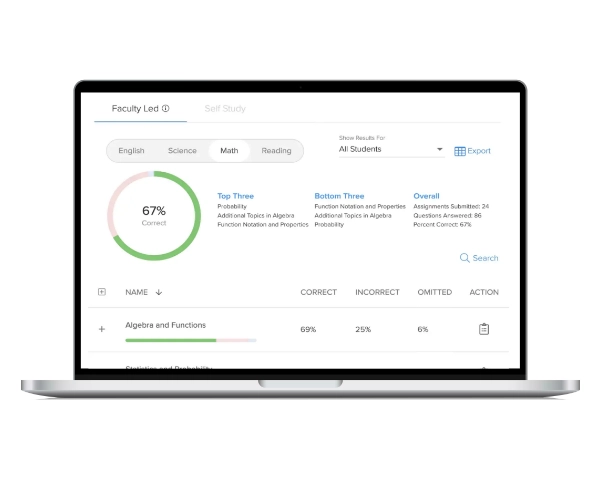Since the 1980s, the American Association of Colleges of Nursing (AACN) has published the Essentials to serve as a framework for professional nursing education. In April 2021, significant revisions were approved that have fundamentally changed what it means to receive a nursing education, whether at the bachelor’s, master’s, or doctoral level. The “new” Essentials: Core Competencies for Professional Nursing Education represent a significant shift toward competency-based learning with the express goal of better preparing students for practice.
The new Essentials provide educators with guidelines for curriculum changes, featuring ten broad domains with included competencies and sub-competencies across four spheres of healthcare, the lifespan, and among diverse patient populations. Each of the ten domains includes Level 1 and Level 2 sub-competencies that differentiate between entry-level professional nursing education and advanced-level nursing education.
| Domain | AACN Essentials 10 Featured Domains |
|---|---|
| 1 | Informatics and Healthcare Technologies |
| 2 | Interprofessional Partnerships |
| 3 | Knowledge for Nursing Practice |
| 4 | Quality and Safety |
| 5 | Person-centered Care |
| 6 | Personal, Professional and Leadership Development |
| 7 | Population Health |
| 8 | Professionalism |
| 9 | Scholarship for the Nursing Discipline |
| 10 | Systems-based Practice |
Additionally, there are eight professional nursing practice concepts including clinical judgment, communication, compassionate care, diversity, equity and inclusion, ethics, evidence-based practice, health policy and social determinants of health.
The new Essentials are intentionally modeled after competency-based education to:
- bridge the gap between nursing education and nursing practice
- remain applicable across educational stages (entry-level to advanced-level)
- allow implementation via multiple curricular models
Why are the new AACN Essentials important?
The new AACN Essentials provide a clearer pathway for professional nursing education and ensure that four-year colleges and universities meet the nursing education requirements to appropriately prepare future nurses for the workforce. In other words, the new essentials debut forward-thinking standards for nursing education. The domains and sub-competencies were carefully chosen to reflect the intricacies of nursing education and knowledge while being mindful of the changing healthcare needs in the 21st century. They also address the current inconsistencies, variability, and quality concerns in current nursing curricula.
Who is impacted by the changing AACN Competencies?
All four-year colleges and universities need to adopt the new Essentials in order to meet the domains and competencies set forth by the AACN. In essence, these changes were intended to be widespread. The National Advisory Council on Nurse Education and Practice (NACNEP) has a stated goal of reaching a workforce where two-thirds of nurses have at least a bachelor’s degree in nursing. With the new requirement, four-year nursing programs are guaranteed to prepare students across levels using the competency-based approach set forth in the new Essentials. The new Essentials prioritize delivery of care and student performance.
When do the changes go into effect?
The new AACN Essentials debuted in April 2021, and will be gradually incorporated into current four-year nursing programs over a period of three years or longer. AACN provides resources and suggested steps for the transition to competency-based education on their website.
How does the new AACN Essentials impact pre-licensure nursing programs?
Competency-based education, competency-based education, competency-based education! Pre-licensure nursing programs will adopt didactic, simulated, laboratory, and clinical learning experiences relevant to the four spheres of care and across the lifespan. Graduates must demonstrate competency in all of the relevant sub-competencies to meet program outcomes and, in turn, improve learning outcomes. Examples of how to integrate or put into practice competency-based learning using different pedagogies can be found below in Table 3. Nursing curricula will provide learning opportunities across increasingly complex environments, over repeated experiences, and across multiple courses.
References
American Association of Colleges of Nursing. (2021). The Essentials: Core Competencies for Professional Nursing Education. https://www.aacnnursing.org/Portals/42/AcademicNursing/pdf/Essentials-2021.pdf
American Association of Colleges of Nursing. (2021). The Essentials: Core Competencies for Professional Nursing Education Frequently Asked Questions. https://www.aacnnursing.org/Portals/0/PDFs/Essentials/Essentials-Revised-Frequently-Asked-Questions.pdf







